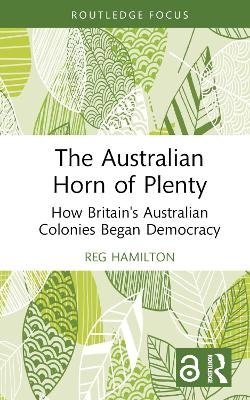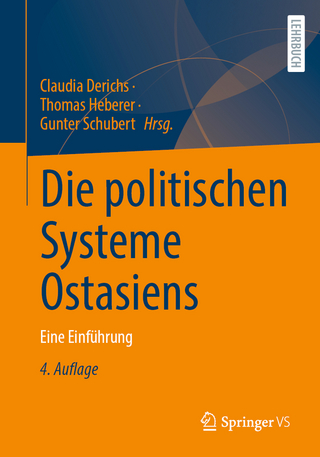
The Australian Horn of Plenty
Routledge (Verlag)
978-1-032-79144-9 (ISBN)
Hamilton explores in a short history how all men gained the vote, self-government and the secret ballot in South Australia (1856), Victoria (1857), and New South Wales (1858).
Australia permanently democratised without a violent revolution, and at a very early time. In 1851–1858, local parliaments in the British colonies of New South Wales, Victoria, and South Australia gave all men the vote, including Aboriginal and Chinese men, the secret ballot, and self-government of local affairs. Britain approved, this book examines the parliamentary debate which led to these radical democracies. Debates covered voting eligibility, the secret ballot, the upper house of parliament, equal electorates, multiple voting, illiterate voters, control of Crown lands, terms of parliament, payment of members, and separation of Church and State. British parliamentary tradition was combined with the advanced liberal thinking of the time, Chartism with the British constitution. The democratisation of 1851–1858 in the three largest Australian colonies was as fundamental to Australian prosperity as the ‘mixed’ market economy.
This is a vital text for scholars of democracy as well as those interested in Australian Studies, Australian History, Political Science, Constitutional Law, and the building blocks of first-world prosperity.
The Open Access version of this book, available at http://www.taylorfrancis.com, has been made available under a Creative Commons [Attribution-Non Commercial-No Derivatives (CC-BY-NC-ND)] 4.0 license.
Reg Hamilton is Adjunct Professor, Central Queensland University, College of Business, School of Business and Law, formerly a Deputy President of the Fair Work Commission and Australian Industrial Relations Commission. He is the author of numerous articles on the history of the minimum wage, and books on labour relations and Australian colonial history.
Table of Contents
Introduction
Chapter 1: Democracy
Chapter 2: What were the 1850s constitutions and electoral laws?
Chapter 3: The ideas that formed these new Australian colonial democracies
Chapter 4: The Colonial leaders that fought for and opposed democracy
Chapter 5: Obstructive Legislative Councils (upper houses)
Chapter 6: New South Wales – the 18th century colony
Chapter 7: Victoria– the colony of the goldfields and Eureka stockade
Chapter 8: South Australia – the democracy colony
Chapter 9: The British framework
Chapter 10: Conclusion
Annexure 1: A Note on Sources
| Erscheinungsdatum | 10.07.2024 |
|---|---|
| Zusatzinfo | 4 Tables, black and white; 21 Halftones, black and white; 21 Illustrations, black and white |
| Verlagsort | London |
| Sprache | englisch |
| Maße | 138 x 216 mm |
| Gewicht | 453 g |
| Themenwelt | Sozialwissenschaften ► Politik / Verwaltung ► Politische Systeme |
| Sozialwissenschaften ► Politik / Verwaltung ► Staat / Verwaltung | |
| ISBN-10 | 1-032-79144-6 / 1032791446 |
| ISBN-13 | 978-1-032-79144-9 / 9781032791449 |
| Zustand | Neuware |
| Informationen gemäß Produktsicherheitsverordnung (GPSR) | |
| Haben Sie eine Frage zum Produkt? |
aus dem Bereich


